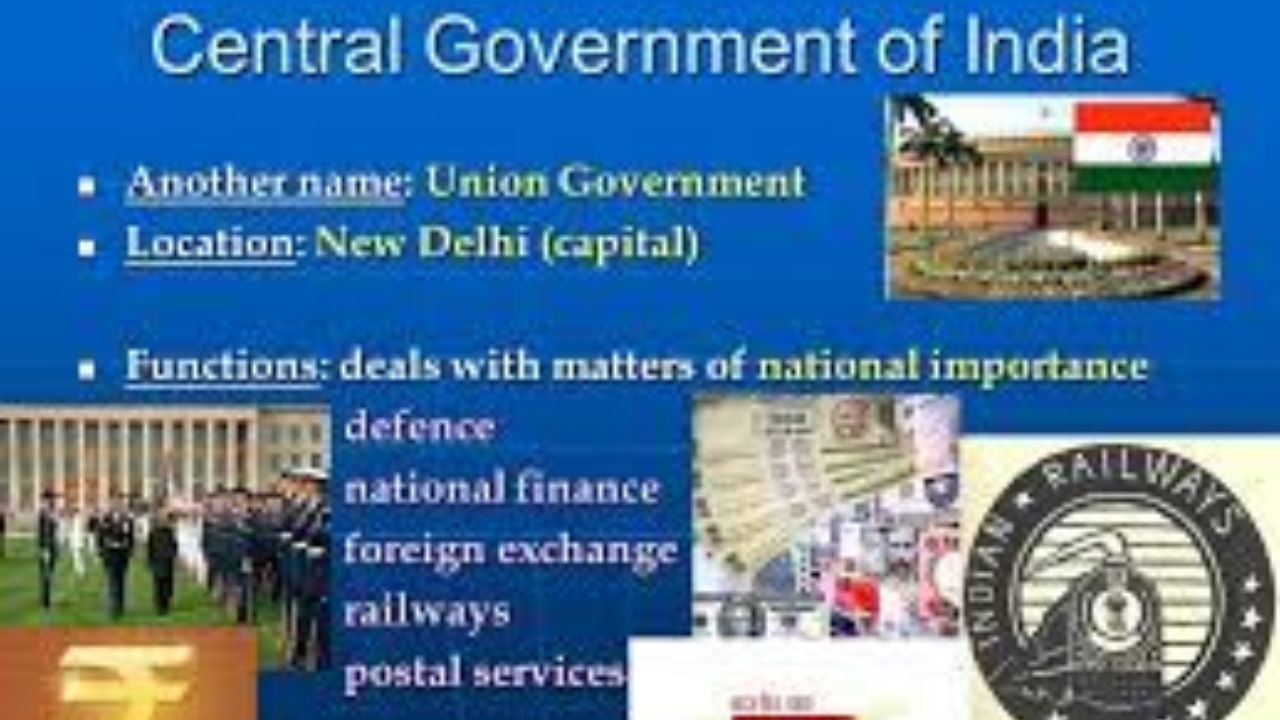Central Government: Definition, Structure, Roles and Responsibilities GOI
The constitution stipulates three types of emergencies: national, state and during an emergency, the central government becomes all-powerful and shades to go into total control of the Centre.

Introduction of Central Government: The term union government is used in India to refer to the central government. However, the Constitution did not have the term ‘Centre’ or ‘Central government’ in all its 395 Articles in 22 Parts and eight Schedules in the Indian Constitution.
History of Central Government
The Constituent Assembly by Jawaharlal Nehru on 13th December 1946 introduced the aims and objectives of the Constituent Assembly by giving the idea that India shall be the Union of Territories who are willing to join the “Independent Sovereign Republic”.
Draft Constitution was made by Dr B.R. Ambedkar who was the chairman of the drafting committee had used the word Union for Central Government and gave two articles in the constitution.
Read Also~Chief Justice of India: CJI Appointment, Age, Salary, Oath, Retirement, Provision in Constitution
However, the members of the Constituent Assembly use the word Union and do not use the word ‘Centre’ in the Constitution. The reason for using Union is the newly born independent India wants to support. The members want to maintain ‘Unity in Diversity.
Features of the Indian Centre Government
1. Strong Centre
The division of power is in favour of the centre and highly inequitable from the central angle firstly the union list contains more subjects than the state list and the union must form all the laws from the union list and the concurrent list.
2. Single constitution
In India, there is no such power of making the constitution to the states the constitution of India imported note on the constitution of the centre but also to the states both the centre and the state must operate with a single frame.
4. All India services
In India, the central and states have separate public services, but there are only centres of all Indian services which include IAS IPS and IFS which are common in both centres and states. The members of the services are created and rented by the centre only and are all supposed as ultimate control over them.
5. Integrated Audit Machinery
The controller and auditor general of India audits the accounts of not only the central government but also the state. He is appointed and removal is done by the president only without consulting the states. they do not have the financial autonomy of the States.
Read Also~MeitY: Ministry of Electronics and Information Technology Role & Responsibilities
KC describes India as a ‘quasi-federal’ Indian Constitution is a unitary state with subsidiary federal features rather than a federal state with subsidiary unitary features.
